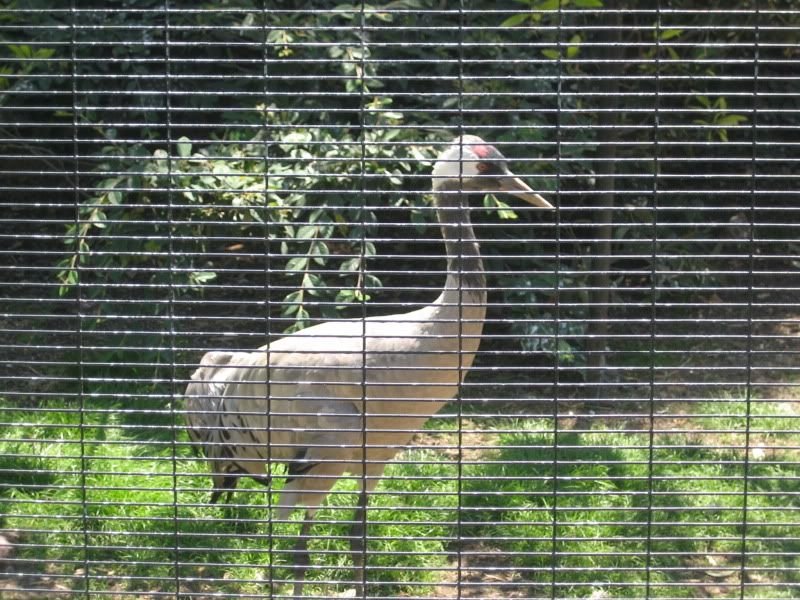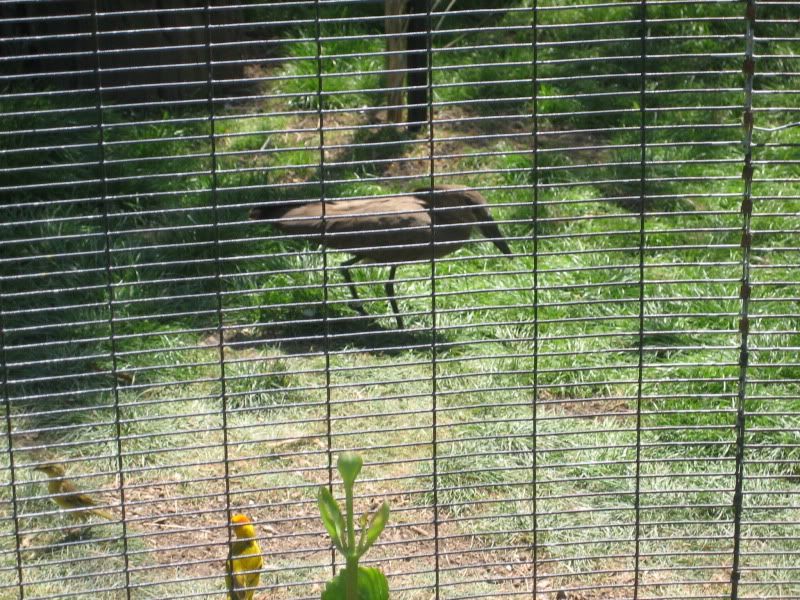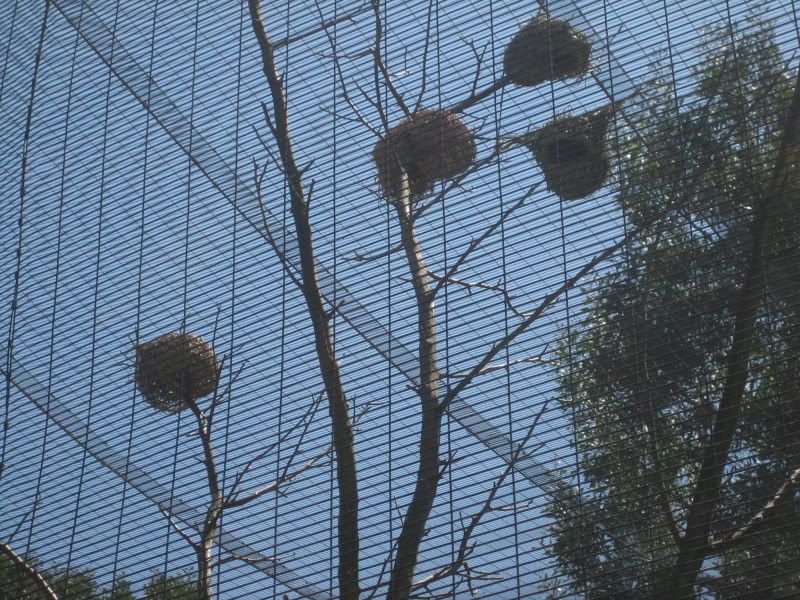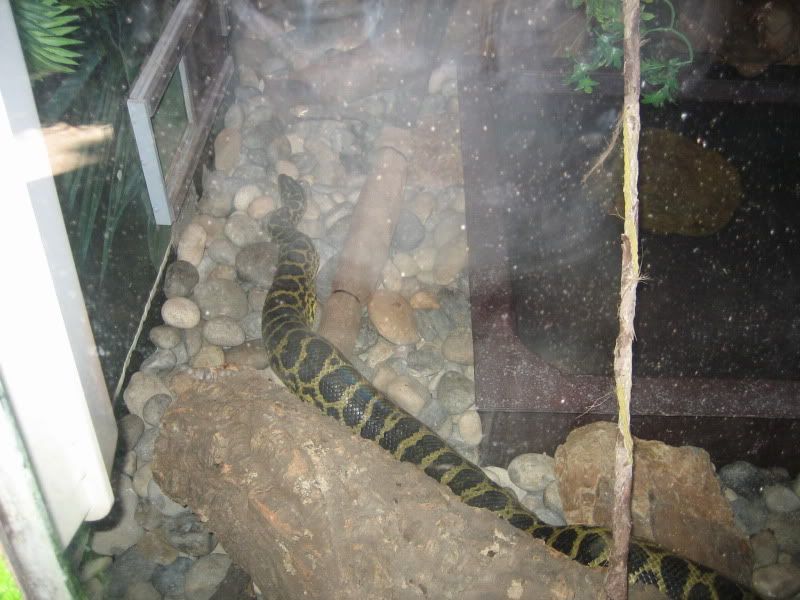Oh man, we got more pictures!
These were taken by my mom, on a real camera no less, so have some actual decent quality. :B
--+--
A better picture of Lil. I love her red eyes.
This is the male hammerkop. You can get a better idea of what his head looks like.
In the bottom left corner are two golden weavers. The species is sexually dimorphic, which means the two sexes look different. The leftmost bird is a female, with duller colors. The bottommost bird is a male, bright gold and checking her out! ;)
And these are what happens after the boy birds get with the girl birds. These are weaver nests! There are tons of these in the aviary. The birds make them out of twigs and grass, expertly woven together. The nests have a bend in them that -- hopefully -- prevents the babies from falling out.
This is Thunder, the Taiwanese beauty snake. He is quite handsome! I actually don't know too much about him, since he spends most of his time up by the window in the front of his exhibit. He's easy for guests to spot, but not so much for interns!
This is Guinevere, the yellow anaconda. She's the one that made that giant shed! She's about eleven feet long. Although all anacondas spend much of their time in water, yellow anacondas are known for being the most arboreal of their kind. Sometimes you can see her enormous body curled around one of the branches in her exhibit.
The window that she's looking at is actually part of the door we use to get into her exhibit. If she parks herself in front of the door, we don't go in. It's probably not good to climb over a 200 pound snake.
Finally, these are our three cottontop tamarins. They share their exhibit with the toucans, since the two species overlap in the wild. They're brothers and sister, and I can't really tell them apart. The female, Electra, is smaller than her brothers. It's hard to get a good picture of them since they're constantly on the move, bounding all over their exhibit before the camera on your phone has a chance to load!
Cottontop tamarins are native to Columbia, where they are critically endangered due to habitat loss. They get their name from the poofy hairdo they develop at only a few weeks of age. These New World monkeys have a primate's intelligence, although no one's sure just how smart they are. According to my supervisor, they understand pushing things to get what they want, but not pulling things.
Cottontop tamarins almost always give birth to twins. They can have triplets if resources are abundant, or a singleton if times are hard.
--+--
And that's it, folks!
My internship has ended for the summer, so that's it for zoo pictures. I'm still answering questions though!
The overall experience has been one-of-a-kind, and I really do believe it's changed my life for the better. To work so closely with these extraordinary animals is magical. Thanks for your kind words!






